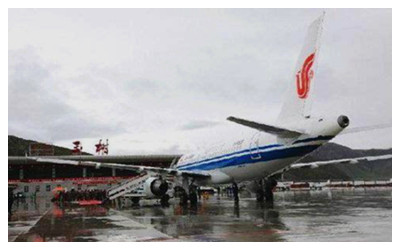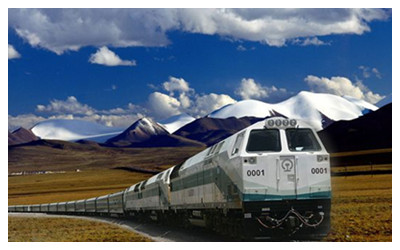- Home
- Province Guide > Qinghai >
Qinghai Transportation
Xining is an important gateway in the south route of Silk Road, commonly called “an entrance to Qinghai-Tibet Plateau” and “a key to Xihai”. Communication here has been convenient and fast since ancient times. Xining, as the capital of Qinghai Province, is the key transport conjunction of Qinghai Province. There is an airport, a railway station and bus stations in Xining; Xining has formed an assorted transport network of air, railway and bus, which has laid a transport foundation for going sightseeing.
By Air

Qinghai province has 5 airports – Xining Caojiabao Airport, ,Golmud Airport,Yushu Batang Airport, Delingha Airport, and Golog Maqin Airport. Xining Caojiabao Airport has become the largest international airport on the Qinghai-Tibet Plateau. Currently it has 97 airlines heading to 65 cities including Beijing, Xi’an, Guangzhou, Chongqing, Shenzhen, Nanjing, Chengdu, Wuhan, etc.
Xining Caojiabao Airport
Golmud Airport
Delingha Airport
Guoluo Maqin Airport
Yushu Batang Airport
By Train
 By the end of 2018, the total length of railways in Qinghai province had reached 2,299 kilometers, including 218 km of them of high-speed lines. One of the most famous rail lines in the province is the Qinghai-Tibet Railway which was completed in 2006. It is the most elevated rail route in the world, reaching an altitude of 5,072 meters.
By the end of 2018, the total length of railways in Qinghai province had reached 2,299 kilometers, including 218 km of them of high-speed lines. One of the most famous rail lines in the province is the Qinghai-Tibet Railway which was completed in 2006. It is the most elevated rail route in the world, reaching an altitude of 5,072 meters.
Qinghai borders on Tibet in the south, and tourists can travel between these two regions by Qinghai-Tibet Railway. Also, Qinghai adjoins Gansu Province in the north and east, and they are linked through Lan-Qing Railway. Regular trains travel back and forth between Xining and Beijing, Shanghai, Lhasa, etc. Lanzhou-Xinjiang High Speed Railway has a station in Xining, which incorporates Xining into the China’s extensive high speed railway network. Thus, tourists can easily get to Xining from Xi’an, Lanzhou, Urumqi, Dunhuang and other cities by high speed train.
By bus
A total of 82,135 km of highways had been put into operation by the end of 2018, a year-on-year increase of 1,240 km and a total length that could circle the equator twice. The length of expressways in the province saw a year-on-year increase of 105 km to 3,328 km.
 Qinghai province has 5 airports – Xining Caojiabao Airport, ,Golmud Airport,Yushu Batang Airport, Delingha Airport, and Golog Maqin Airport. Xining Caojiabao Airport has become the largest international airport on the Qinghai-Tibet Plateau. Currently it has 97 airlines heading to 65 cities including Beijing, Xi’an, Guangzhou, Chongqing, Shenzhen, Nanjing, Chengdu, Wuhan, etc.
Qinghai province has 5 airports – Xining Caojiabao Airport, ,Golmud Airport,Yushu Batang Airport, Delingha Airport, and Golog Maqin Airport. Xining Caojiabao Airport has become the largest international airport on the Qinghai-Tibet Plateau. Currently it has 97 airlines heading to 65 cities including Beijing, Xi’an, Guangzhou, Chongqing, Shenzhen, Nanjing, Chengdu, Wuhan, etc. By the end of 2018, the total length of railways in Qinghai province had reached 2,299 kilometers, including 218 km of them of high-speed lines. One of the most famous rail lines in the province is the Qinghai-Tibet Railway which was completed in 2006. It is the most elevated rail route in the world, reaching an altitude of 5,072 meters.
By the end of 2018, the total length of railways in Qinghai province had reached 2,299 kilometers, including 218 km of them of high-speed lines. One of the most famous rail lines in the province is the Qinghai-Tibet Railway which was completed in 2006. It is the most elevated rail route in the world, reaching an altitude of 5,072 meters. Ask Questions ?
Ask Questions ?